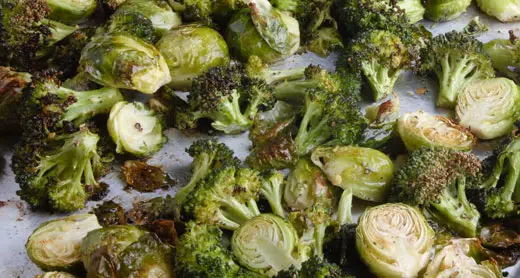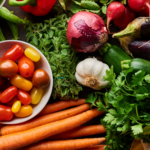COVID-19 has already killed more than 6 million people worldwide, and studies have shown that common colds cost
an estimated economic loss of $25 billion in the US alone each year.
In the study in the journal Communications Biology, scientists showed that sulforaphane, a plant-derived chemical, known as a phytochemical, already found to have anti-cancer effects, can inhibit the replication of SARS-CoV-2, the coronavirus that causes COVID-19, and another human coronavirus in cells and mice.
While the results are promising, the researchers caution the public against rushing to buy sulforaphane supplements available online and in stores, noting that studies of sulforaphane in humans are necessary before the chemical is proven effective, and emphasizing the lack of regulation covering such supplements.
Sulforaphane’s natural precursor is particularly abundant in broccoli, cabbage, kale, and Brussels sprouts. First identified as a “chemopreventive” compound decades ago, natural sulforaphane is derived from common food sources, such as broccoli seeds, sprouts, and mature plants, as well as infusions of sprouts or seeds for drinking.
Previous studies, including those at Johns Hopkins Medicine, have shown sulforaphane to have cancer and infection-prevention properties by way of interfering with certain cellular processes.
“When the COVID-19 pandemic started, our multidisciplinary research teams switched our investigations of other viruses and bacteria to focus on a potential treatment for what was then a challenging new virus for us,” says senior author Lori Jones-Brando, an assistant professor of pediatrics at the Johns Hopkins University School of Medicine.
“I was screening multiple compounds for anti-coronavirus activity and decided to try sulforaphane since it has shown modest activity against other microbial agents that we study.” The researchers used purified, synthetic sulforaphane purchased from commercial chemical suppliers in their experiments.
In one experiment, the research team first exposed cells to sulforaphane for one to two hours before infecting the cells with SARS-CoV-2 and the common cold coronavirus, HCoV-OC43. They found that low micromolar (µM) concentrations of sulforaphane (2.4–31 µM) reduced the replication by 50% of six strains of SARS-CoV-2, including the Delta and Omicron variants, as well as that of the HCoV-OC43 coronavirus. The investigators also observed similar results with cells that had been previously infected with the viruses, in which the protective effects of sulforaphane were seen even with an already established virus infection.
The group also examined the effects of sulforaphane when combined with remdesivir, an antiviral medication used to shorten the recovery of hospitalized adults with COVID-19 infections.
They found that remdesivir inhibited 50% of the replication of HCoV-OC43 and SARS-CoV-2 at 22 µM and 4 µM, respectively. Further, the research team reports that sulforaphane and remdesivir interacted synergistically at several combination ratios to reduce by 50% the viral burden in cells infected with HCoV-OC43 or SARS-CoV-2.
In this context, synergism means that lower doses of both sulforaphane (for example, 1.6–3.2 µM) and remdesivir (for example, 0.5–3.2 µM), when combined, are more effective against the viruses than either applied alone.
“Historically, we have learned that the combination of multiple compounds in a treatment regimen is an ideal strategy to treat viral infections,” says Alvaro Ordonez, first author of the paper, and an assistant professor of pediatrics. “The fact that sulforaphane and remdesivir work better combined than alone is very encouraging.”
The researchers then conducted studies in a mouse model of SARS-CoV-2 infection. They found that giving 30 milligrams of sulforaphane per kilogram of body weight to mice before infecting them with the virus significantly decreased the loss of body weight that’s typically associated with virus infection (7.5% decrease).
Further, the pretreatment resulted in a statistically significant decrease in both the viral load, or amount of virus, in the lungs (17% decrease) and upper respiratory tract (9% decrease) as well as the amount of lung injury (29% decrease) compared with infected mice that were not given sulforaphane. The compound also decreased inflammation in the lungs, protecting the cells from a hyperactive immune response that seems to be one of the driving factors that has caused many people to die from COVID-19.
“What we found is that sulforaphane is antiviral against HCoV-OC43 and SARS-CoV-2 coronaviruses while also helping control the immune response,” Ordonez says. “This multifunctional activity makes it an interesting compound to use against these viral infections, as well as those caused by other human coronaviruses.”
The team plans to conduct studies in humans to evaluate if sulforaphane can be effective in preventing or treating these infections.
“Despite the introduction of vaccines and other medications that can have side effects, effective antiviral agents are still necessary to prevent and treat COVID-19, particularly considering the potential effects of new coronavirus variants arising in the population,” Jones-Brando says. “Sulforaphane could be a promising treatment that is less expensive, safe, and readily available commercially.”
Additional coauthors are from Johns Hopkins. The National Institutes of Health, Mercatus Center, the Center for Infection and Inflammation Imaging Research at Johns Hopkins University School of Medicine, and the Stanley Medical Research Institute funded the work.
Jones-Brando, Ordonez, and coauthors Robert H. Yolken and Sanjay K. Jain are co-inventors on a pending patent application filed by Johns Hopkins University. All other authors have no competing interests.
Source: Johns Hopkins University









































